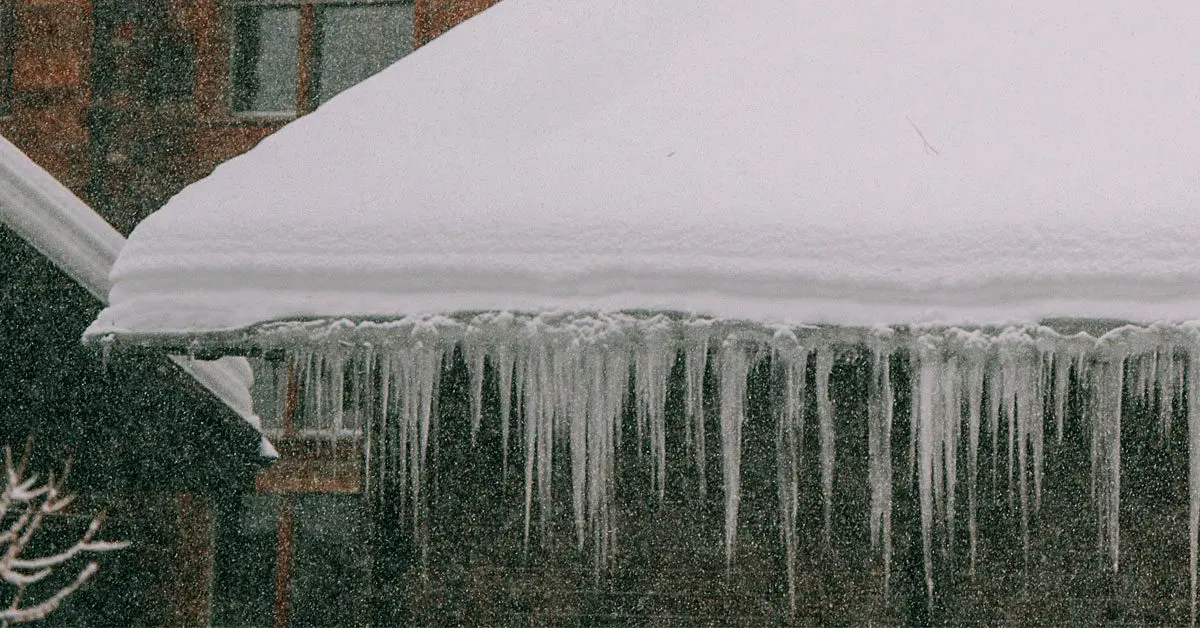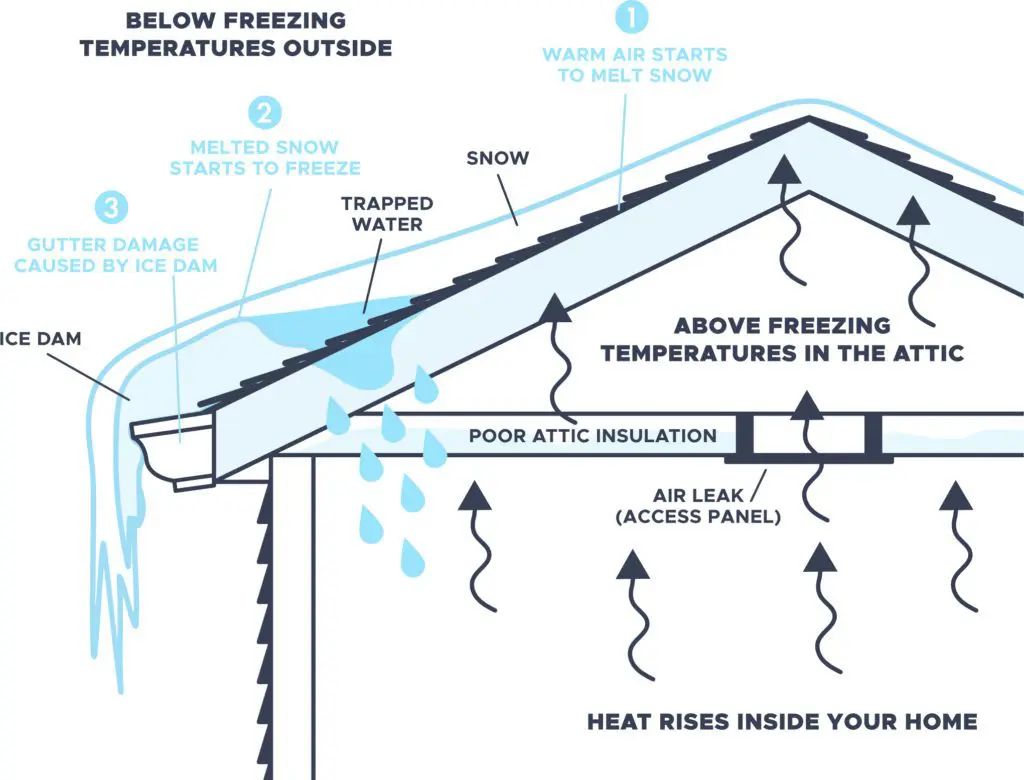
We get many calls in the winter season from homeowners panicking about ice dam removal because their gutters appear to be failing due to trapped water and melting snow.
To an untrained eye, it can certainly seem like gutters are the issue. After all, that’s where much of the visible problem is, but it isn’t actually your gutters creating the trapped water problem; it’s an ice dam.
An ice dam is precisely what it sounds like. A thick band of ice forms along the edge of your roof (often at the gutters). Once the ice has formed, the water from melting snow higher on your roof has nowhere to go, so it backs up behind the dam, causing issues that require professional ice dam removal.
While it’s lingering there, the water can cause extensive (and expensive) damage as it seeps into your attic, ceilings, walls, insulation, and other areas such as your gutters. Not to mention the future formation of mold from all that excess moisture being trapped. This is why ice dam prevention is critical to avoiding costly repairs.
Ice dams form when there’s the right combination of heat loss within your home, snow on your roof, and outdoor temperatures. Essentially, the heat loss from your home melts the snow, but it’s cold enough outside that the snow doesn’t stay melted; it refreezes as ice before it can be drained by the gutters, leading to the need for removal of ice dams.
The science behind it is that enough of the upper surface of your roof must be warmer than 32* while the lower-lying shingles are below 32*. As snow melts and runs down your roof, it turns to ice as it nears the colder shingles closest to your gutters. The water behind that coldest portion of your roof remains liquid and can seep into the structure.

Heat loss from your attic causes the snow on your roof to melt.
Melting snow slides down from the warmer part of your roof to the colder edges.
When it comes to ice dam prevention, an ounce of prevention really is worth a pound of cure. Once ice dams have formed, little can be done until they melt away or until you remove all of the ice dams.
If an ice dam has already formed, safely removing snow from your roof can help minimize further buildup. Some people use a roof rake or broom to get the snow off, but it should be noted that these tools could cause damage to your roof. Another tactic for ice dam removal is using tap water from the hose to form enough channels in the ice dam that water can pass through.
Heat loss is the main contributor to ice dams that you can influence and control. Rather than try and deal with ice dams once they form, minimizing heat loss prevents ice dams from even getting started.
Managing heat loss is a relatively straightforward project. Seal air-leakage paths between your ceiling and attic to prevent warm air from seeping into the space. If needed (and it usually is necessary), increasing the insulation and ventilation in the attic further reduces heat loss and effectively prevents the formation of ice dams.
Many homeowners find that adding attic insulation and sealing air leaks makes ice dams a thing of the past, eliminating the need for repeated removal of ice dams each winter.
Heating cables along the roof and gutter can help, but they aren’t without drawbacks. Under some conditions, they can aid in ice dam prevention. However, if the snowfall is heavy enough, the heating cables alone will not be enough.
If you already have gutter damage from an ice dam, give us a call. We can install new seamless gutters and give you tips on preventing future damage. Fill out our quick & easy estimate form to get started on a free estimate today.
Ice dam prevention is the best way to avoid costly damage to your home, but if ice dams have already formed, safe removal is key to minimizing harm. Taking proactive steps like improving attic insulation, sealing air leaks, and maintaining proper ventilation can greatly reduce the risk of ice dams forming. If you need professional help with ice dam removal or repairing damage caused by ice dams, reach out to us for expert solutions and seamless gutter installation. Stay ahead of winter problems and protect your home today!
Preventing ice dams involves proper attic insulation, ventilation, and sealing air leaks to reduce heat loss from your home. Keeping your roof clear of snow and ensuring proper drainage can also help prevent ice dams from forming. Learn more
The safest way to remove an ice dam is to use a roof rake to clear snow, apply calcium chloride ice melt, or hire professionals for steam ice dam removal. Avoid chipping at the ice, as this can damage your roof. Learn more
Heating cables can help minimize ice dams by keeping water flowing off the roof, but they are not a foolproof solution. Proper attic insulation and ventilation are more effective in preventing ice dams.
Yes, ice dams can cause roof leaks, shingle damage, and structural issues, as well as put excess weight on your gutters, leading to gutters pulling away or breaking. Timely removal and prevention are key to protecting your home.
About Gutter Pros
Gutter Pros is a top-rated gutter company specializing in gutter installation of seamless gutters. Serving homeowners in the Chicago land area, we provide expert solutions to protect your home from water damage.
Call us: (773) 999-2079
Fill in the form below and we will get back to you as soon as possible

